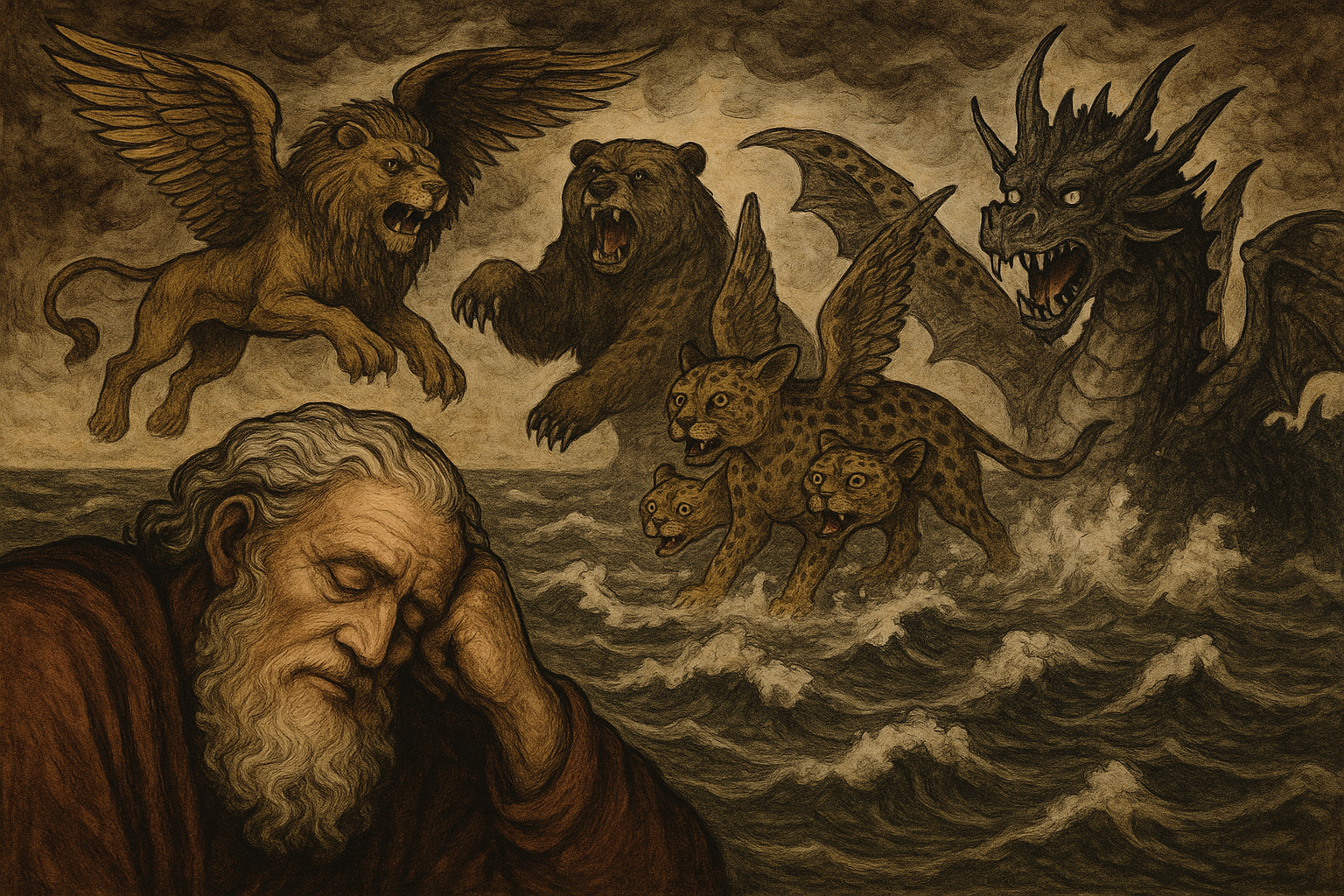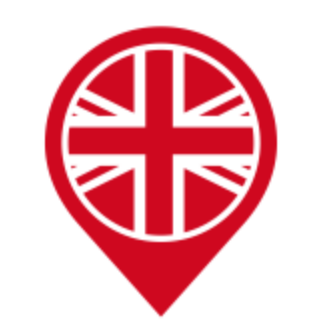Daniel's Dream
Rome didn’t conquer all the territories of Media and Persia.

The Four Beasts
Daniel had a vivid dream in the seventh chapter of his book. He saw four strange beasts rising out of a stormy sea—a vision of empires rising and falling, leading to the everlasting kingdom of God.
“In the first year of Belshazzar king of Babylon, Daniel had a dream and visions ... Daniel said, ‘I saw in my vision by night, and behold, the four winds of heaven were stirring up the great sea. And four great beasts came up out of the sea, different from one another.’”
— Daniel 7:1–3
The First Beast — Babylon
“The first was like a lion and had eagle’s wings ... and the mind of a man was given to it.”
— Daniel 7:4
The image of a winged lion was common in Babylonian art. The eagle stood for speed, and the lion for strength and nobility. Together, they represent the majesty of Babylon, the empire of Nebuchadnezzar.
The Bible describes Nebuchadnezzar as both a lion and an eagle, highlighting his power and dominance over surrounding nations.
The Second Beast — Media
“And behold, another beast, a second one, like a bear. It was raised up on one side; it had three ribs in its mouth between its teeth; and it was told, ‘Arise, devour much flesh.’”
— Daniel 7:5
The bear is slower and more awkward than the lion, fitting the Median Empire better than Persia. Unlike Cyrus the Persian—known for swift victories—Media moved slowly and failed to conquer Babylon on its own.
The bear had three ribs in its mouth, symbolizing three nations conquered by Media. Jeremiah names them:
“Prepare the nations for war against her, summon against her the kingdoms, Ararat, Minni, and Ashkenaz…”
— Jeremiah 51:27–29
These northern kingdoms became part of the Median Empire which was also being raised up by God to topple Babylon.
“The Lord has stirred up the spirit of the kings of the Medes…”
— Jeremiah 51:11
“Behold, I am stirring up the Medes against them…”
— Isaiah 13:17
The Third Beast — Persia
“After this I looked, and lo, another, like a leopard, with four wings of a bird on its back; and the beast had four heads; and dominion was given to it.”
— Daniel 7:6
This fast, four-winged leopard contrasts with the slow bear. It reflects the swift rise of Persia under Cyrus, who defeated Media and created an empire larger than any before.
The four wings suggest rapid expansion in all directions. Cyrus even described himself as “king of the four corners of the earth.” His palace at Pasargadae features a four-winged figure linked to his name.
The four heads represent Cyrus, Cambyses, Darius, and Xerxes—rulers who built Persia’s wealth and power. Under Xerxes, the empire reached its peak. The four-headed leopard shows both Persia’s speed and its collective leadership.
The Fourth Beast — Greece
“After this I saw in the night visions, and behold, a fourth beast, terrible and dreadful and exceedingly strong; and it had great iron teeth…”
— Daniel 7:7
“...which was different from all the rest, exceedingly terrible…”
— Daniel 7:19
“...and it shall devour the whole earth, and trample it down, and break it to pieces...”
— Daniel 7:23
This terrifying beast doesn't resemble any known animal. Its iron teeth show destructive strength. Its power and speed point to the Greek Empire, especially under Alexander the Great whose rapid conquest matches the beast’s violent, unstoppable nature.
Ten Horns and the Little Horn
“...and it had ten horns. I considered the horns, and behold, there came up among them another horn, a little one…”
— Daniel 7:7–8
The ten horns represent ten rulers from the Greek Empire’s later phase. The first seven horns were the Seleucid kings ruling Syria. The “little horn” represent Antiochus Epiphanes, who uprooted three others. Though small at first, Antiochus rose to power, calling himself Theos Epiphanes (God Manifest). He persecuted Jews, banned worship, and desecrated the temple. As prophesied by Daniel, his oppression lasted about three and a half years.
The Everlasting Kingdom
“I saw in the night visions, and behold, with the clouds of heaven there came one like a son of man…”
— Daniel 7:13–14
“But the saints of the Most High shall receive the kingdom, and possess the kingdom forever…”
— Daniel 7:17–18
After the fourth beast falls, a heavenly figure—the “Son of Man”—is brought before the Ancient of Days (God the Father). He receives everlasting rule over all peoples and nations.
Jesus often called Himself the “Son of Man,” linking Himself to this vision:
“You will see the Son of Man seated at the right hand of Power and coming on the clouds of heaven.”
— Matthew 26:64
His rule began after His resurrection:
“Jesus Christ … is at the right hand of God, with angels, authorities, and powers subject to him.”
— I Peter 3:21–22
His coming on clouds is symbolic, and describes His second coming which culminated in the destruction of Jerusalem in A.D. 70.
Why Not Rome?
Christian Zionists see this fourth beast as Rome, but the fourth beast and the little horn are destroyed before the Son of Man receives His kingdom. Since Christ began His heavenly reign after His resurrection, the fourth empire must have already ended.
Rome didn’t conquer all the territories of Media and Persia. Much of Media and Persia never fell under Roman control. It didn’t “trample the whole earth” as the prophecy says. Rome did not fulfill the prophecy. Only Greece fits the vision.

